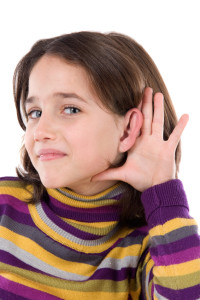 Have you ever noticed that we live in a very noisy world?
Have you ever noticed that we live in a very noisy world?
We’ve just published a short but very important post talking about noise levels and children (http://www.tinytappingtoes.com/uncategorized/how-loud-is-too-loud-part-1/). But many parents also wonder about related issues that are also worth considering. Here are some common sense answers that might help when thinking about sound, music and other types of entertainment or media in relation to young children.
Talk to Me, Mommy!
Don’t forget that the human brain learned how to develop in a world that consisted mainly of other humans speaking, singing or talking. The added stimulation from t.v., radio and electronic devices are fairly new and although they can provide helpful and educational content, most studies show that the input from human contact makes the most difference to a child. Whenever possible, experts suggest that parents emphasize “one-on-one time” speaking or interacting with a baby or young child and downplay external media, no matter how educational it might seem.
Silence is Golden
Similarly, having some time for quiet, quiet activities, family conversation or turning off electronic media can help everyone in the family feel more relaxed and calm. Believe it or not, even when there’s no media playing, a child’s brain is still performing the important function of listening and cataloguing sounds such as a bird singing, a phone ringing, siblings chatting or a car passing by.
Turning down the noise level can often help a child process the world around them in a way that is meaningful and integrated. In case after case, studies show that in regard to external noise and electronic media – less is often more.
When In Doubt, Turn It Down
And since we’ve all gotten used to a louder world, it helps to give some thought to things like stereo speakers in cars or where a baby is seated in a room. If a car seat is buckled in a location with the car’s speaker is nearby, what may seem like a reasonable volume to the driver, might easily be too loud for the child whose ears are closer to the source of the sound.
In the same way, what might seem like a normal t.v. or radio volume to a parent cooking dinner across a room, might be too loud for a child seated next to the sound source.
When in Doubt – Check It Out
It makes perfect sense that a child might cry when hearing noises that are too loud for them. But what if they continue to express discomfort with sound or sound levels when things seem to be at a reasonable volume? In this case, visit your pediatrician. Although most children receive a hearing screening before leaving a hospital or birth center, regular check-ups can detect problems and solve them in a timely manner.
Nemours, a non-profit education medical website has these comments about treatment regular check-ups and hearing loss:
“Treatment for hearing loss can be the most effective if it’s started by the time a child is 6 months old. Kids who seem to have normal hearing should continue to have their hearing evaluated at regular doctors’ appointments. Hearing tests are usually done at ages 4, 5, 6, 8, 10, 12, 15, and 18, and any other time if there’s a concern.”
Speak Up, Turn It Down!
Recently I attended a party that was a benefit for pediatric brain cancer. Sadly; as entertainment, the hosts had hired a dj who insisted on playing music so loud it could cause hearing loss in small children, many of which were playing near the speakers.
If you’re having a party or visiting one where the noise level is questionable or too high, speak up! DJ’s are often situated behind their speakers and may not recognize the noise level for guests in the room. And, if it’s still a concern, let the musicians, dj or party host know how you feel. Damaging noise levels can create problems for children, some of which won’t appear immediately but can have permanent and devastating results.
Again, you can check out the facts in our latest post about children, ear protection and hearing loss as well as at the Nemours KidsHealth Website at the links below.
Resources
How Loud is Too Loud –Part 1 http://www.tinytappingtoes.com/uncategorized/how-loud-is-too-loud-part-1/
Hearing Evaluation Information For Children From The Nemours KidsHealth Website:
http://kidshealth.org/parent/general/eyes/hear.html

 Most people associate making music with expressing yourself, having fun and making noise! Although its great fun to sing, dance and play an instrument, there are also many world traditions that use music to quiet the soul, to learn to listen and to encourage rest, sleep or meditation. Quiet time instruments or music are perfect for sharing with your children around naptime, bedtime or for a break during a busy day.
Most people associate making music with expressing yourself, having fun and making noise! Although its great fun to sing, dance and play an instrument, there are also many world traditions that use music to quiet the soul, to learn to listen and to encourage rest, sleep or meditation. Quiet time instruments or music are perfect for sharing with your children around naptime, bedtime or for a break during a busy day.

 Make Your Own Ocean Drum
Make Your Own Ocean Drum